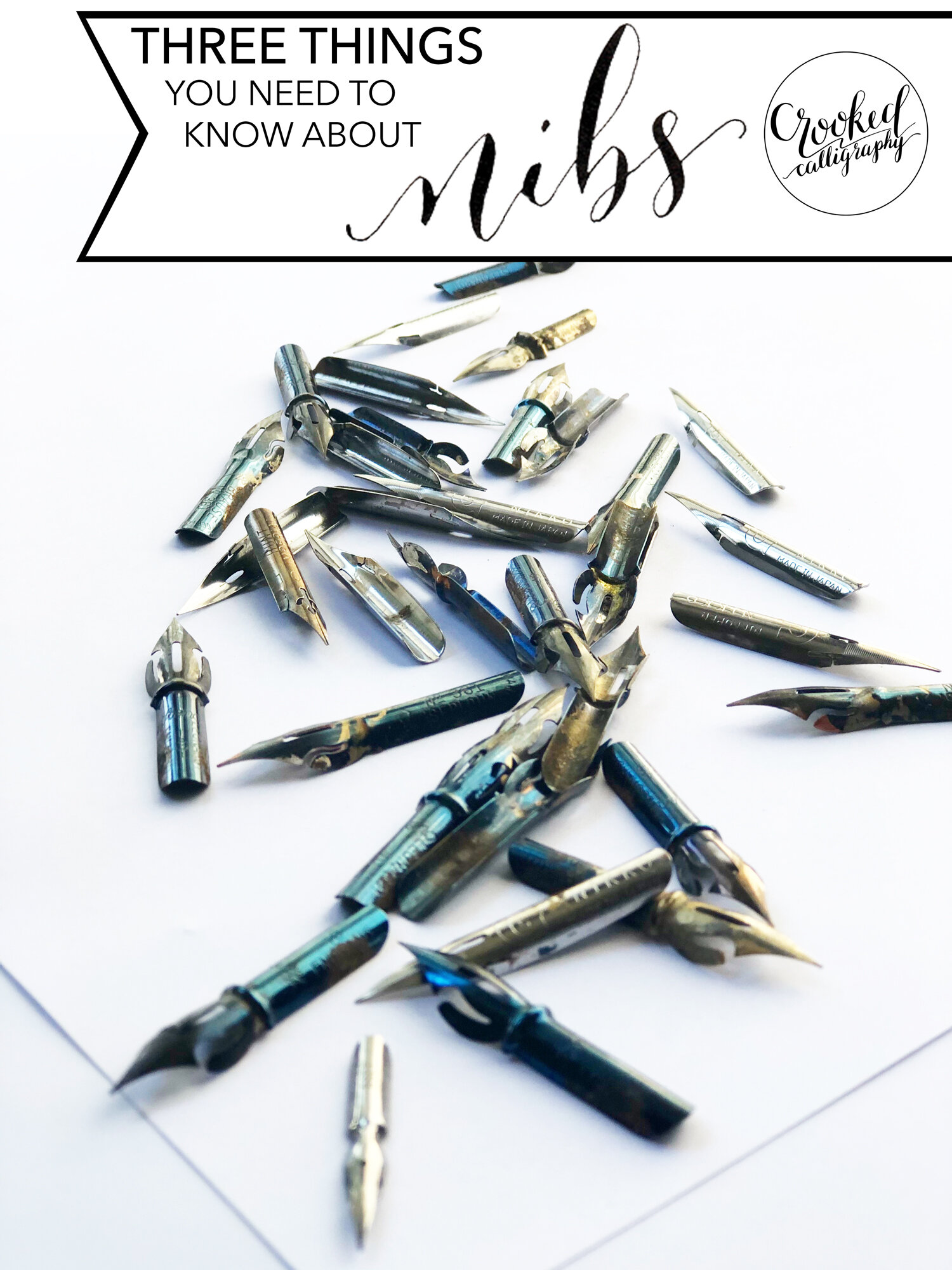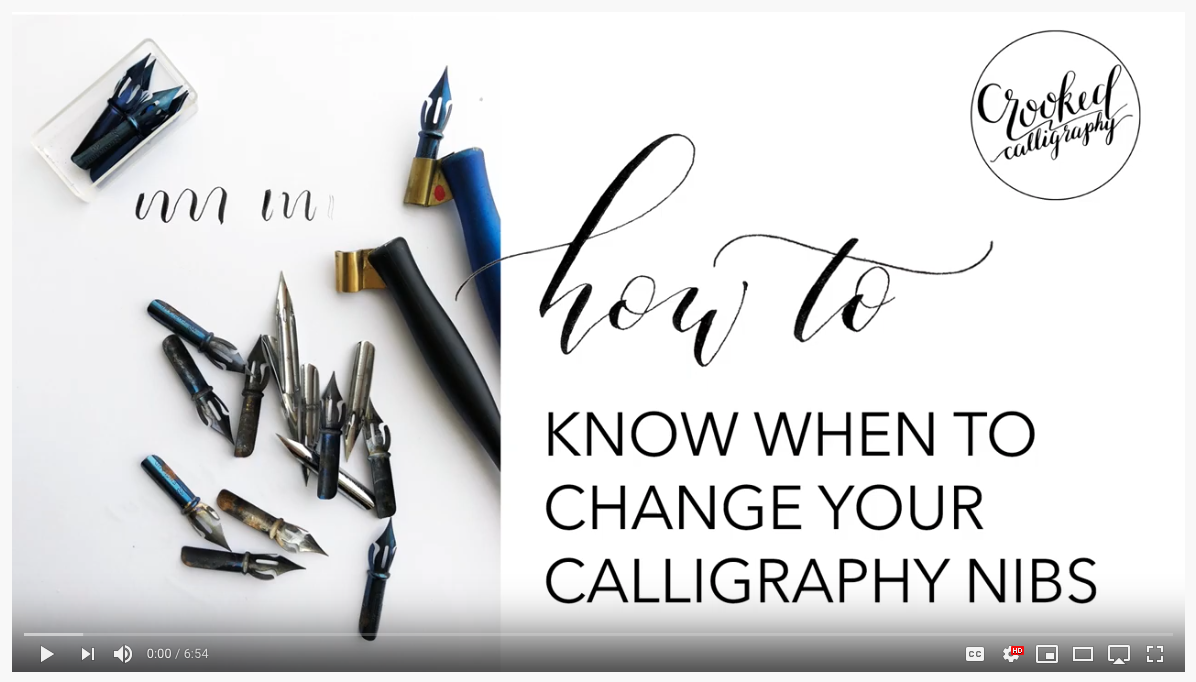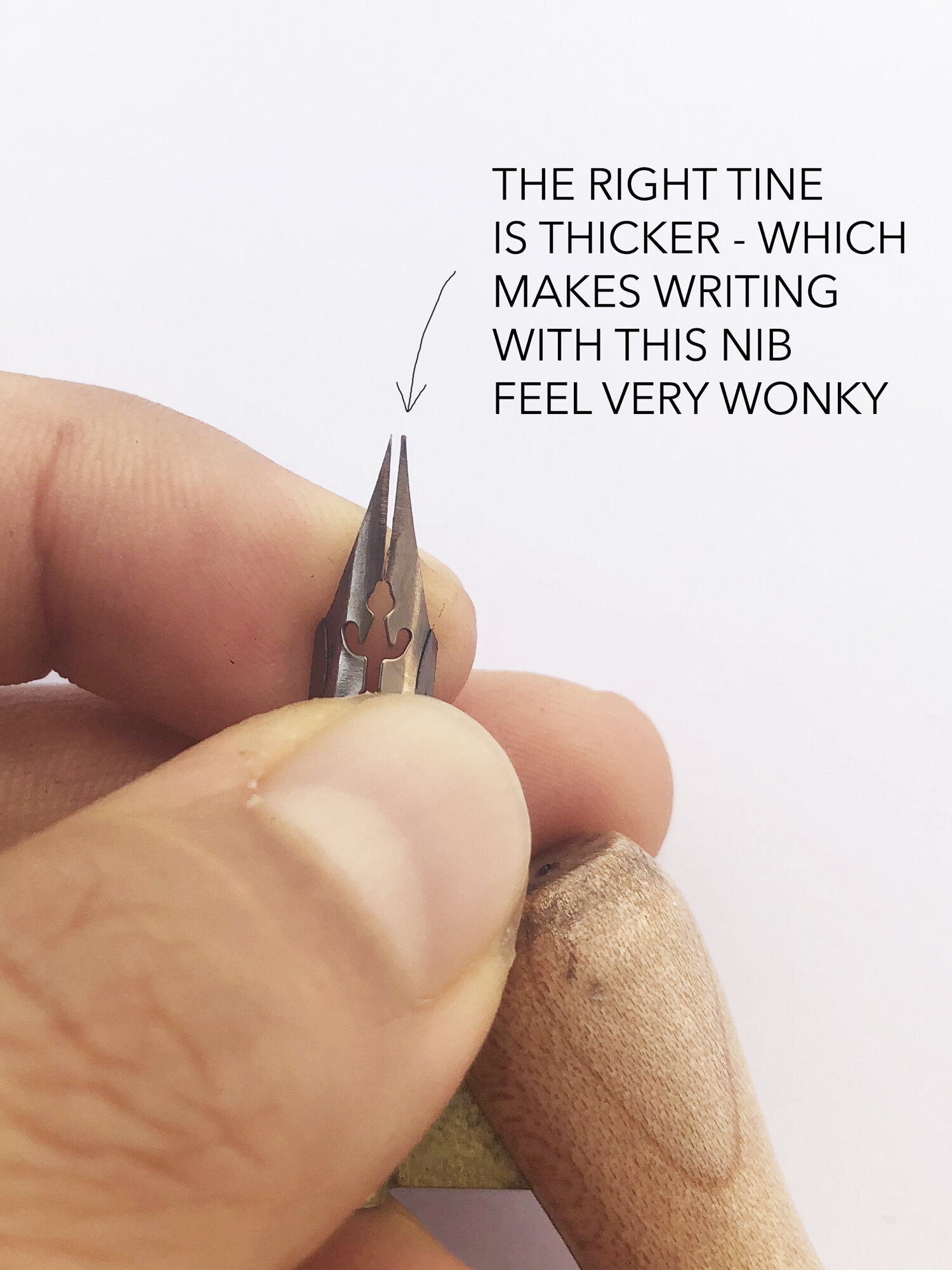You know what’s frustrating? When you sit down to do some relaxing calligraphy… and the damn NIB just WON’T. FLOW. RIGHT.
So here’s a quick little article to help you better understand these pointy little guys!
1. NEW NIBS ARE DIRRRRTY
Ok, not X-Tina dirty (tell me I’m not the only old person who gets this reference).
But, brand-new nibs do come with a coating that keeps them from rusting while in storage. Which is great!
Unfortunately, the coating also keeps ink from sticking properly to the nib. Which is less great…
Fortunately, cleaning your new nibs is easy!
There are tons of different ways…
But my favorite cleaning method is the old spit n’ shine.
If that sounds squicky to you, you can check out this whole other list of ways to clean your nibs. (Hint: there are fire and potatoes involved…)
2. NIBS HAVE A LIFESPAN
Even though they’re made of pretty tough metal, nibs still wear out with use!
It’s impossible to give you an average lifespan - it varies widely depending on the TYPE of nib, how OFTEN you use it and HOW you use it.
But here’s a helpful YouTube Video so you know when to chuck an old nib and start with a fresh new one.
3. SOME NIBS ARE DUDS!
Nibs aren’t always manufactured perfectly. Depending on the brand and style, you can often get brand-new ones that just feel “off.”
The Hunt 101 in the photo, for example, was cut improperly. If you look closely, you can see that the left tine is very sharply pointed. But the right tine is larger and has a squared-off tip… which means this nib is never going to write smoothly.
I’ve gone through hundreds of Nikko Gs and Brause Stenos and have never had a problem. Those two are thicker, sturdier, less flexible nibs so there’s less margin for error.
But I’ve found that with the thinner, finer, more flexible nibs like the Brause EF66, Brause Rose, Leonardt Principal and Hunt 101, there’s a higher chance of getting a nib that’s just manufactured slightly wrong.
So, if your nib just refuses to release the ink, or feels excessively scratchy, or dumps ink more frequently than before… it might be a dud! If you’re serious about calligraphy, it’s best to keep several nibs on hand so you can change them out and save yourself the frustration.
One of the hardest things about learning pointed nib calligraphy is diagnosing WHICH of the many factors is the culprit when things go wrong (the nib? the ink? the paper? you?)
So, the more bits of knowledge you have about your tools, the more easily you can figure out these little hiccups. I hope this helps you on your calligraphy journey!
TIRED OF FEELING LOST WITH YOUR CALLIGRAPHY?
Teaching yourself calligraphy can feel like fumbling around in the dark. You’re getting ink blobs… but you DON’T KNOW WHY!!! Your nib keeps catching on your paper… but you DON’T KNOW WHY!! Your letters don’t look right… but you DON’T. KNOW. WHY.
You need a ROADMAP…. and fast.
My FREE Calligraphy Roadmap will show you the six steps you need to follow to actually get GOOD at calligraphy. Without spending HOURS a day practicing boring rows of drills.
Get outta the dark. And start having FUN with your calligraphy!






